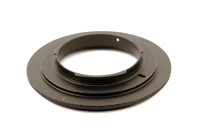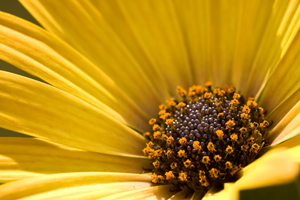How To Reverse A Lens For Macro Photography Video
Not many people know that they can get started in macro photography without a macro lens. This video by Mike Browne will teach us how to reverse a lens for macro photography.

How To Reverse A Lens For Macro Photography? Through this nifty little lens reversal ring adapter.
Reversing your kit lens on your DSLR camera is one of the most economical way to enter the world of macro photography. By reversing your current kit lens, you can achieve magnification that is similar or greater than an actual macro lens. The best results can often be achieved through the use of a prime wide angle lens. For example, if you reverse a 20mm lens, you have the capability to take shots of your subjects that are magnified 4 times of its size! You will often hear people refer to this as a ‘Super Macro’ shot.
Before you try the lens reversal technique, it is important for you to consider the advantages and disadvantages –
Advantages Of The Lens Reversal Ring
- Economical and can be done with any types of lenses
- Gives you a chance to ‘see in macro’ and explore the world of macro photography
- Achieves great results as it lets you focus really close up to your subject
Disadvantages Of The Lens Reversal Ring
- As your lens is mounted backwards, you will lose most of the auto functions (eg. capability to automatically adjust your aperture, auto focus). All these will need to be controlled manually.
- This is generally not a long term solution – dust may get into your lens since it is mounted backwards.
- Difficult to focus due to the increase in magnification – any small movement will be magnified.
- A tripod is often required to minimize any unwanted movements and help with focusing.
You can easily find a lens reversal ring adapter to fit most cameras (eg. Canon or Nikon). As they come in different sizes (to match the diameter of your current lens), you will need to ensure that you choose the correct diameter of your lens. To find out the correct size, the diameter is often printed onto the bottom of your lens. This is the same diameter as the UV filters that screw onto the front of your lens.
httpv://www.youtube.com/watch?v=uVYtgJi2rLc
Choosing a Lens Reversal Ring Adapter
To mount your current lens in reverse you will need a lens reversal ring adapter. In order to find a suitable adapter you will need to know the following –
1) Camera brand
2) Lens diameter (Note: This is printed onto the bottom/side of your camera lens. This is the diameter of your front lens.)
You can find these stocked at Amazon and they are currently on sale from 35% – 70% off. So, don’t miss out –
Nikon – 52mm, 58mm, 67mm, 72mm
Canon – 52mm, 58mm, 67mm, 72mm
* If you have a different camera brand, the easiest way to find the adapter is to click on this link to go to Amazon and browse / search for one that is relevant to your camera brand eg. Pentax reverse mount adapter 52mm









